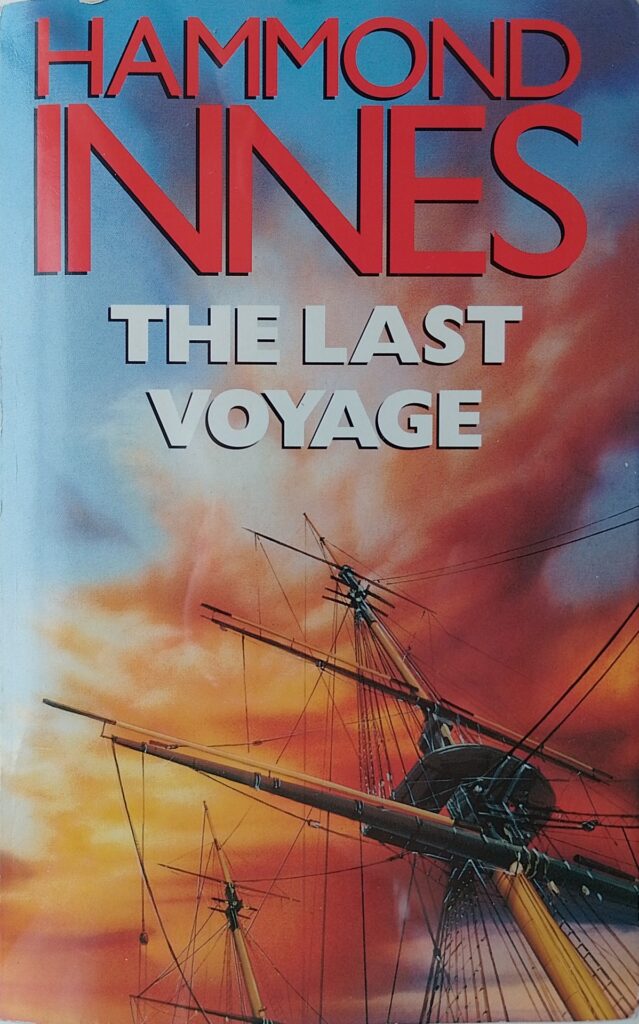First published 1978. Pan paperback, 1996, pp 307, c.70,000 words.
This is not the usual Innes thriller. It is an imaginary diary of Captain James Cook’s third and last voyage of discovery. Cook, and others, kept logs of their activities during the journey, and these were intended to be handed to the authorities who had commissioned the expedition. Innes imagines that Cook also wrote a more personal account that captured his thoughts and feelings. Judging by the ‘Author’s Note’ at the end, it seems as though this was something of a passion project for Innes, who was a keen sailor.
The opening is couched as a flashback to the preparation for the voyage, and it fills in some biographical information on Cook up to this point. It has a rather confusing narrative structure and doesn’t make for wholly comfortable reading. Once the story turns to the imagined present it settles down. We get to feel what it was like to be captain of such a ship on an expedition that was expected to last years, and of the character of the man. He knew it was vital to look after his crew and had only lost four on his previous three-year circumnavigation [p3]. He was very concerned with discipline, especially with regard to food and hygiene as the key to the crew’s survival, but he also recognised that the crew needed occasional entertainment and relaxation.
Interestingly, one of Cook’s senior officers was Bligh, then aged twenty-two: he who would later be of “the mutiny on the Bounty” fame. On this voyage, Cook had few officers and men that he had travelled with before, only the captain of the second ship on the expedition was a close associate, and he was increasingly ill with tuberculosis. We get a good feel for how this and his increasing age affects his mental state.
Cook had been given secret orders to search for the North-West passage, a fabled route from the Atlantic to the Pacific either above North America or Russia. The orders seem to have been secret for two reasons: the British didn’t want the French or other powers to know what they were up to, and secondly the crew might have rebelled at the idea. Visiting the islands of the Pacific was an attractive prospect (the known free ways of the women of the islands), braving the cold and ice of the far north was not. Cook volunteered for the role as expedition leader partly because it was something he loved doing, but also because discovery of a northern passage would cement his reputation and fortune.
There were also scientific objectives for the voyage. A new clock was being tested as an aid to navigation, and it was checked against astronomical observations. The expedition was also expected to improve the accuracy of maps, and to chart the previously unvisited (by Europeans) coast of northern North America.
Innes gives the story an air of a historic document. He sometimes uses archaic spellings such as ‘trowsers’ [p85] and capitalises names of fruit and vegetables [e.g. p111]. He is also very good at conveying the atmosphere on board the ships; frustrations mounted up after so long away from home, and especially so in poor weather and when unable to go ashore for supplies or relaxation. One gets a graphic sense of the amazing achievement at keeping the whole show on the road.
Cook’s end is delt with well. We get a clear sense that his options were narrowing and his personal authority would carry him only so far. The Hawaiians might have been frustrating to deal with, but they were not unreasonably upset by the draining of their resources with the lengthy stay of the ships in their waters. A short stay was a welcome opportunity to trade, but a long stay by a large crew consumed a lot of food.
One feels that Innes has studied all the accounts of the voyage and has understood the nature of Cook. Adding his own experience of the sea, and we are given a compelling drama that feels authentic.
Wikipedia biography of Innes: https://en.wikipedia.org/wiki/Hammond_Innes
Others’ reviews of the book: https://www.goodreads.com/book/show/1058892.The_Last_Voyage?from_search=true&from_srp=true&qid=LtcfXPmIFQ&rank=1
© William John Graham, January 2024

